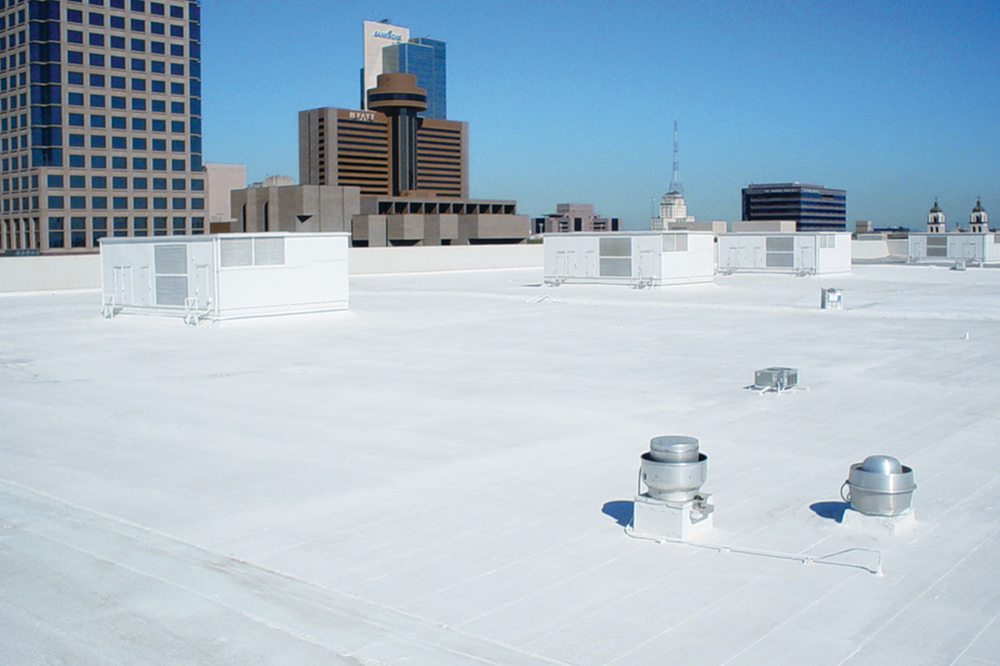
The Critical Role of Ventilation in DFW's Commercial Roofing Systems

Introduction
In the dynamic landscape of commercial roofing, particularly in the Dallas-Fort Worth (DFW) area, ventilation plays an indispensable role. It’s not merely a technical specification; it’s a crucial element that can significantly influence the longevity and efficiency of roofing systems. SCR, Inc. General Contractors in Rockwall, TX, understand this principle intimately, ensuring that their services encompass comprehensive ventilation solutions tailored to commercial properties.
Proper ventilation is essential for regulating temperature and moisture levels within commercial buildings. By facilitating air circulation, we can mitigate the risk of damage caused by heat buildup or trapped humidity. This article will explore the critical role of ventilation in DFW's commercial roofing systems, delve into various aspects such as types of ventilation systems, benefits of effective ventilation, and its impact on roof repair and maintenance.
The Critical Role of Ventilation in DFW's Commercial Roofing Systems
Understanding Commercial Roofing Systems
What Constitutes a Commercial Roofing System?
A commercial roofing system comprises several components—decking, insulation, waterproofing membranes, and drainage systems—all working together to protect a building from environmental elements. In DFW, where severe weather conditions are common, these components need to be robust and well-ventilated.
Types of Commercial Roofing Materials Commonly Used
Each material has unique properties that affect how they interact with DFW Metroplex flat roof installation experts air circulation and moisture management.
The Importance of Ventilation in Roofing
How Does Ventilation Work?
Ventilation involves the intentional introduction and circulation of outside air within a building or roofing system. This process helps to regulate temperature and humidity levels inside the structure.
Why Is Ventilation Crucial for Roof Longevity?
Effective ventilation prevents overheating during summer months and reduces ice dam formation in winter. Without adequate airflow, roofs suffer from heat-related stress and moisture accumulation leading to deterioration.
Key Benefits of Proper Ventilation
Minimizing Heat Buildup
Heat buildup can cause various issues including:
- Reduced lifespan of roofing materials
- Increased energy costs due to overworked HVAC systems
- Discomfort for occupants
Proper ventilation alleviates these concerns by allowing hot air to escape efficiently.
Controlling Moisture Levels
Moisture control is vital for preventing mold growth and structural damage. Effective ventilation promotes drier conditions which are imperative for maintaining the integrity of insulation materials.
Types of Ventilation Systems for Commercial Roofs
Natural vs Mechanical Ventilation: What's the Difference?
Natural ventilation relies on passive methods such as openings in eaves or ridge vents while mechanical ventilation requires fans or blowers to circulate air actively.
Pros and Cons of Natural Ventilation
Pros:
- Energy-efficient
- Low maintenance costs
Cons:
- Dependent on wind patterns
- Less effective in extreme weather conditions
Pros and Cons of Mechanical Ventilation
Pros:
- Controlled airflow regardless of external factors
- Can be designed for specific needs
Cons:
- Higher initial installation costs
- Requires ongoing maintenance
Installing Effective Ventilation Systems
Factors to Consider When Installing a Ventilation System
Professional Installation Services
Choosing a reputable contractor like SCR, Inc., ensures that your commercial roof tarping or repair integrates an effective ventilation system tailored to your specific needs.
Impacts on Emergency Roof Repairs
How Poor Ventilation Leads to Emergency Repairs
Inadequate airflow can exacerbate existing problems or lead to new ones requiring emergency interventions such as:
- Water infiltration
- Mold remediation
- Structural damage repairs
The Role of Emergency Roof Tarping
When immediate repairs aren't feasible, utilizing an emergency roof tarp can protect against further damage while awaiting permanent solutions.
Understanding Roof Repair Needs
Signs Your Roof May Need Repairs
Some indicators include:
Ignoring these signs may lead you down the rabbit hole requiring costly repairs later on!
Finding Reliable Roof Repair Services
Searching for "roof repair Dallas" or “TPO roof repair near me” can yield numerous results; however, opting for experienced contractors like SCR ensures quality service that emphasizes proper ventilation practices during repairs.
The Cost-Benefit Analysis of Proper Ventilation
Initial Investment vs Long-Term Savings
Investing in adequate ventilation may seem costly upfront but consider this: improved energy efficiency leads to lower utility bills over time! Plus, fewer emergency repairs mean less hassle down the line—a win-win!
Regulatory Standards Surrounding Commercial Roofing
Building Codes Affecting Ventilation Practices
Understanding local building codes is crucial when designing an effective roof system; they often stipulate minimum Seam-welded TPO roofing solutions for wind resistance in Fort Worth requirements for ventilation based on climate zones! This is especially relevant in regions prone to severe weather events like those frequently experienced in DFW.
Innovative Technologies in Roofing Ventilation Systems
Smart Sensors & Automated Controls
Emerging technologies allow real-time monitoring and adjustments based on current weather conditions—ensuring optimal performance without constant human intervention.
FAQs About Ventilation in Commercial Roofing Systems
1. What is the main purpose of roof ventilation?
The primary purpose is to regulate temperature and moisture levels within roofing systems thereby prolonging their lifespan.
2. How do I know if my roof is properly ventilated?
Signs include consistent indoor temperatures throughout seasons and absence of condensation issues inside your attic space!
3. Can poor ventilation affect my energy bills?
Absolutely! Inadequate airflow forces HVAC systems to work harder resulting in higher energy costs!
4. What are common types of ventilators used?
Common options include ridge vents, soffit vents, gable vents, turbine vents among others—each serving unique purposes based on design specifications!
5. When should I schedule professional evaluation services?
If you notice any signs indicating potential moisture buildup or heat-related issues—it’s wise to consult experts specializing in commercial roofing!


6. Are there any DIY solutions available?
While some minor adjustments might be manageable at home—consultation with professionals ensures all safety standards are met effectively maximizing efficiency across all fronts!
Conclusion
In summary, understanding The Critical Role of Ventilation in DFW's Commercial Roofing Systems cannot be overstated; it directly impacts not only the longevity but also the overall functionality and energy efficiency associated with these structures! Investing time into evaluating existing systems—and partnering with knowledgeable contractors like SCR—will pay dividends down-the-line through reduced repair needs while promoting healthier work environments across various sectors! Don’t let poor airflow jeopardize your investment; ensure that your commercial roofing remains resilient against both time—and nature's unpredictable challenges!